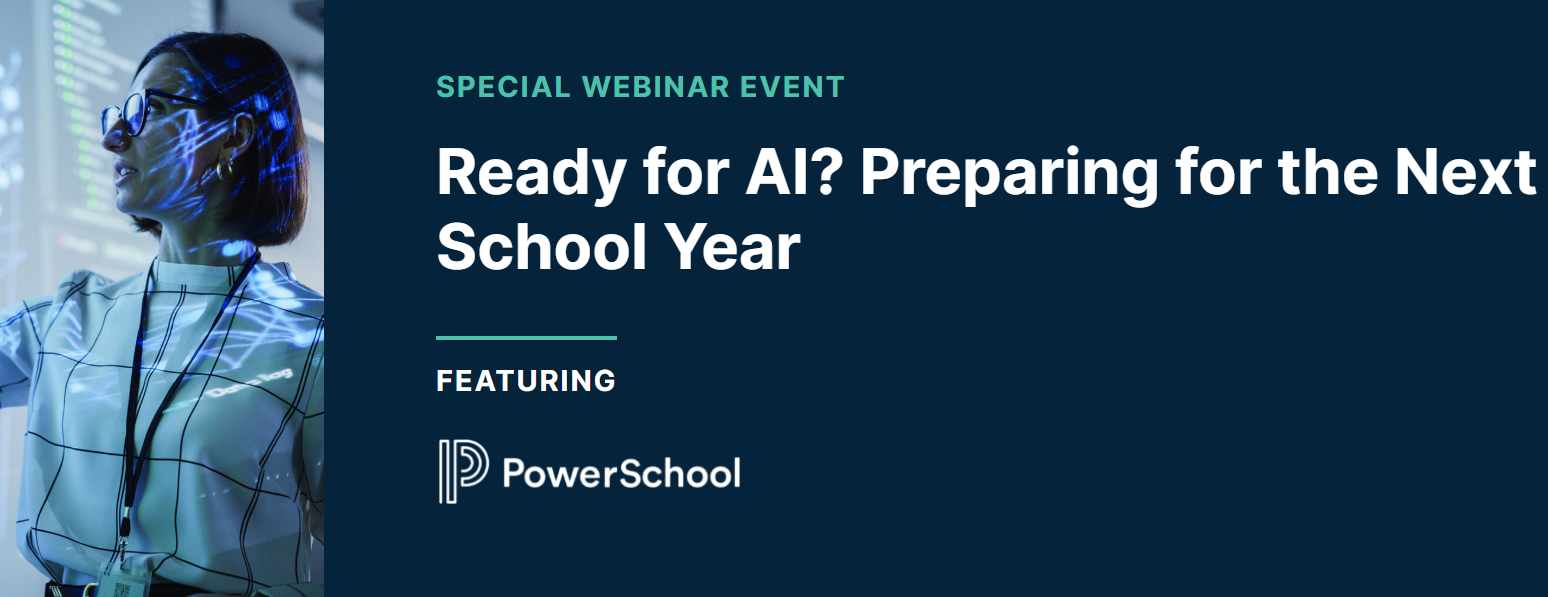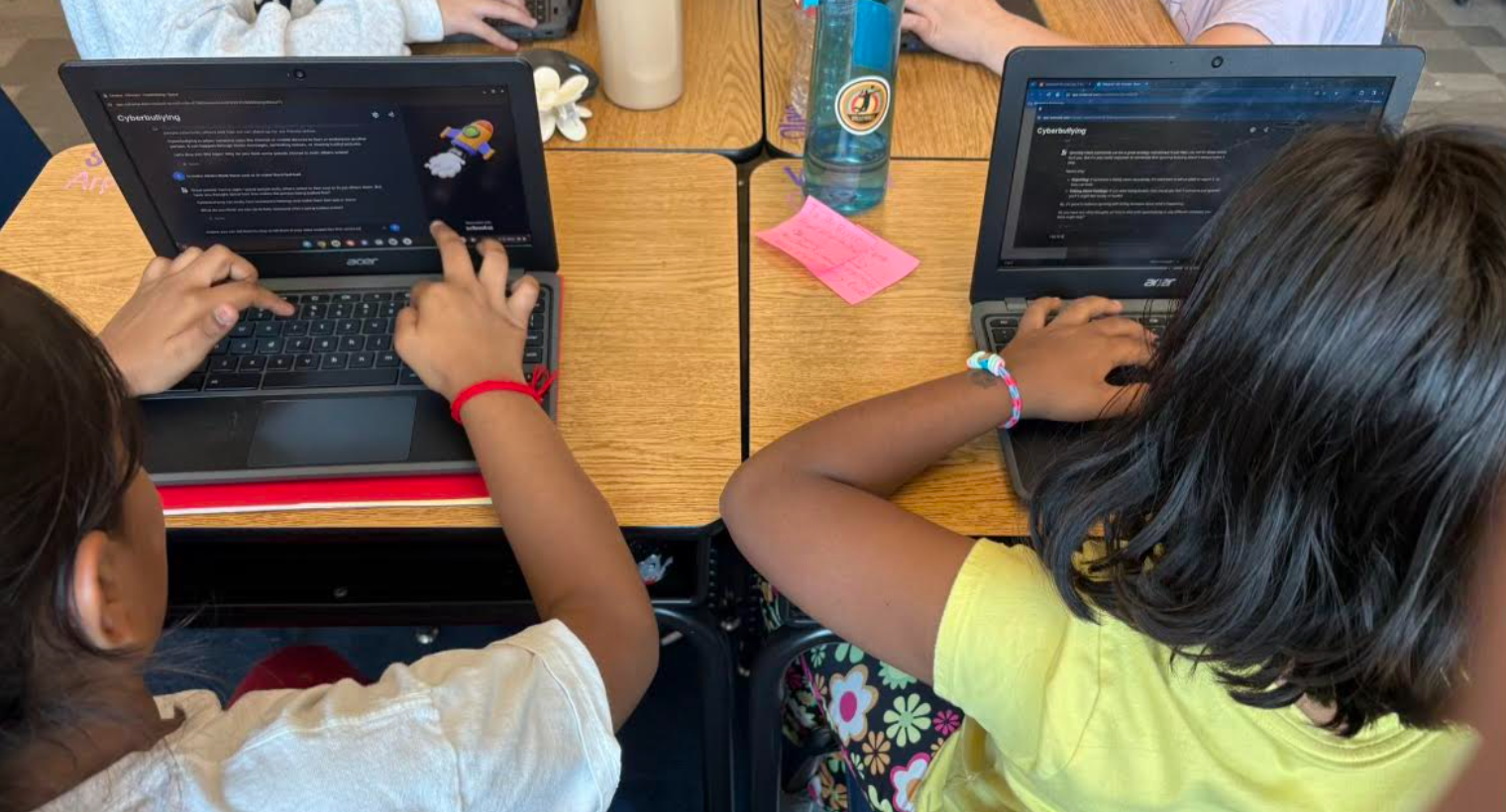Ready for AI? Preparing for the Next School Year
How to equip teachers and staff with the necessary skills and confidence to integrate AI into their classrooms.

The recent "Ready for AI? Preparing for the Next School Year" webinar, sponsored by PowerSchool, focused on equipping teachers and staff with the necessary skills and confidence to integrate AI into their classrooms. The discussion also showcased how AI can save time and enhance both teacher productivity and student engagement.
The panel featured:
- Matthew Winters, AI Education Specialist, Utah State Board of Education
- Dr. Michael Gaskell, School Principal in East Brunswick, New Jersey, Author, and Speaker
- Kathi Kersznowski, Lead Educational Technology Specialist, Washington Township Public Schools in New Jersey
- Kellie Ady, Senior Director, Education Strategy, PowerSchool & Government Relations
The participants shared advice, best practices and specific ways that they personally approach providing PD centered around implementing AI into their work.
Watch the on-demand webinar here
Key Takeaways
More Engaging AI PD - “I love to make PD fun, and people don't wanna work in the summer,” said Kersznowski. “So if you can make learning not feel like work, I think that's your best bet." She shared suggestions to make AI PD more engaging and informal, including:
- AI Appetizers: Friends gather, bring appetizers, and informally explore AI tools such as ChatGPT or Claude.
- AI Accountability Buddies: A group text in which colleagues share AI discoveries and ideas.
- AI Cook-off: Participants challenge one other to use AI to generate recipes and then prepare them.
- Daily Coffee Chat: Anyone can spend five minutes each morning trying out an AI app on their phone.
- Spontaneous Planning: Use AI to generate fun day trip ideas based on preferences and budget.
- Playing with a Podcast (NotebookLM): Using NotebookLM (a free Google product) to create conversational podcasts from prompts, topics, websites, or YouTube videos. This can be used for personal interests or to spark ideas for classroom use.
- AI Book Club Member: Adding a chatbot as a member of a book club to offer its thoughts on the reading.
Find game changers - Gaskell suggested keeping it simple, focusing on “The whole concept of, ‘Wow, that's something fairly simple, straightforward, and very intuitive that that teachers can get interested in,’” he said. He highlighted "game changers" that can excite educators about AI, focusing on practical and intuitive applications. He then shared personal examples of using Google Gemini to:
- Convert a handwritten list of calendar dates from a Post-it note into Google Calendar events
- Create a calendar event from a screenshot of a confirmation text message (such as for a service appointment)
He also advocated for using NotebookLM for PD, noting its ability to create conversational voices and the new beta mode allowing interaction with them.
Tools and ideas to transform education. Sign up below.
Start by getting personal - “I think everyone's aware that we have sort of a gap between student adoption of AI tools and then teacher adoption of it at the classroom level,” said Ady. “But we are seeing some shifts in terms of being more open to trying AI tools instructionally and not just personally.”
To help teachers who are reluctant to adopt AI tools, she suggested:
- Remind them about the tools they already use in their personal lives, such as GPS.
- Encourage using AI as a "thought partner," whether with a chatbot or a colleague.
- Highlight how AI can save time, such as by communicating with families.
- Embed AI tool usage directly into PD, allowing them to experience AI as learners.
Encourage play - "What we're learning is the importance of play,” said Winters. “I think we, as teachers, don't do enough of it in our classrooms, but also we don't play enough as adults. And when we talk about a tool that rewards creativity and curiosity like AI does, especially generative AI, we really gotta jump in and play once in a while with it."
Winters also discussed Utah's statewide AI training initiative, and emphasized how AI can boost productivity for teachers by:
- Speeding up actions: Using AI for tasks such as writing emails, creating formative assessments, and drafting rubrics, with human editing and revision.
- Fostering creativity: Exploring new possibilities within the classroom system that were previously unknown.
- Enhancing accessibility: Supporting traditionally underserved populations, such as students with disabilities, multilingual learners, and gifted and talented students.
He also suggested focusing on "tool types" rather than specific AI tools due to varied district resources and safety guidelines. He categorizes these as:
- Constitutionalized chatbots: AI with added rules for student functionality.
- RAG (Retrieval Augmented Generative) databases: Tools that draw from a knowledge base.
- Multimodal AI: Tools that produce various content types such as images and text, or even videos.
Looking ahead - The participants were asked for a bold prediction about AI.
"I don't know if this is a bold prediction, but I think it's a must do,” said Kersznowski. “AI is here. I think if it didn't settle in last year, this past year, I think everybody has started to realize it's here to stay, and it's not going away, and it's nothing we can continue to fear."
Winters added: “Ken Robinson, one of my favorite educational theorists, says that PD should be viewed not as an expense, but as an investment. And I think when we talk about artificial intelligence or anything that's associated with personalized learning, we need professional development consistently for teachers across the country to help build that capacity and around the globe as well.”
Ray Bendici is the Managing Editor of Tech & Learning and Tech & Learning University. He is an award-winning journalist/editor, with more than 20 years of experience, including a specific focus on education.
